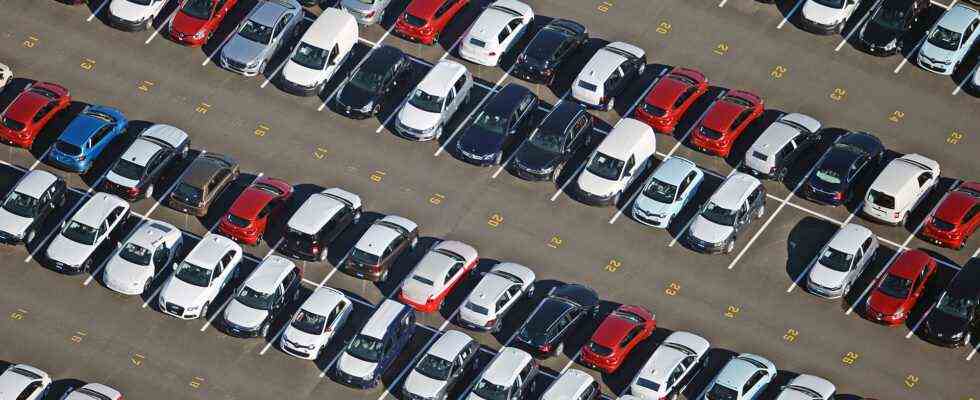analysis
Status: 07/14/2021 11:50 a.m.
The EU Commission presents its package for the climate-friendly restructuring of the economy. The German auto industry is badly affected. Some manufacturers have already reacted in advance.
From Jakob Mayr,
ARD studio Brussels
How is Europe progressing? That is the crucial question for Germany’s key industry. Because the car manufacturers are facing huge upheavals in view of the Brussels plans. The deputy head of the EU Commission, Frans Timmermans, identified a rethink in the corporations months ago:
They have now really understood that there is another path that one also has to go. As we work out our proposals, we will assume that there is also a need to change this industry step by step and we want to be helpful there. There won’t be any bans, but it’s clear that we’re going to be stricter on emissions.
Roman Rusch, ARD Brussels, on the EU’s climate goals
daily news 12:00 p.m., July 14, 2021
Is that the end of the combustion engine?
The EU has decided to reduce the emission of climate-damaging gases by 55 percent by 2030 compared to 1990, and by the middle of the century, the bottom line is that greenhouse gases should no longer be emitted. In order to achieve these goals, automakers must also do more. A group’s vehicle fleet is currently allowed to emit an average of 95 grams of CO2 per kilometer. As things stand so far, CO2 emissions should decrease by 37.5 percent by 2030. The Commission is now significantly tightening this requirement. Vice President Timmermans calls for minus 60 percent by 2030 and minus 100 percent five years later.
So Brussels is not calling for the end of the internal combustion engine, but it does specify by when the emissions of new cars must drop to zero – which in fact comes to the same thing. The Brussels think tank Transport & Environment (T&E) supports this. Your Germany director Stef Cornelis does the math:
In order to achieve the European climate targets, all new cars that are sold must be electric by 2035 at the latest. Germany must and can act faster. The federal government recently tightened the national climate targets and wants to become climate neutral by 2045. To do that, all new cars must be electric by 2032.
Some set the pace
According to an analysis by T&E, the manufacturers are positioned to varying degrees: Volkswagen and Volvo are at the forefront with an aggressive strategy for phasing out the internal combustion engine. VW wants to have converted half of its models to battery cars by 2030. Others like Ford have a goal but no plan for how to achieve it. BMW, Daimler and Toyota come off worst in the study: low sales figures for e-cars, little ambition in the exit target, too much focus on plug-in hybrids.
The industry is divided. Your association VDA defends itself against the end of the combustion engine and promotes openness to technology. The responsible managing director Kurt-Christian Scheel explains:
Of course, the rapid ramp-up of electromobility has clear priority; it must also be accelerated further in order to achieve the climate targets. But we believe that the internal combustion engine will continue to be needed in certain areas.
Alternatively, vehicles could be powered by hydrogen, synthetic or biofuels. However, this is very expensive because the production of these e-fuels uses a lot of electricity.
Industry on the verge of change
In any case, fewer mechanical engineers and more electrical engineers and software specialists will be in demand in the future – a huge change for the more than 800,000 employees in the German automotive industry. Especially highly specialized suppliers who only manufacture certain components have a hard time. The number of electric cars registered in Germany is still manageable, but the number is growing rapidly – in May new registrations rose by almost 400 percent compared to the previous year.
BMW CEO Norbert Zipse – currently chairman of the European manufacturers’ association Acea – recently stated that the automotive industry will make its contribution to a climate-neutral Europe by 2050 – under the following conditions:
Under the right conditions, we are even open to higher CO2 reduction targets by 2030. But the Green Deal must oblige all sides. The EU member states must invest more in charging stations and hydrogen filling stations. ”
Charging stations in Europe – still in short supply
Because customers only switch to e-cars if they can find enough charging stations on the way. According to Acea, however, these are very unevenly distributed: 70 percent are in just three countries, namely the Netherlands, France and Germany.
The rest of the EU is underserved. Romania has 490 charging points, the six times smaller Netherlands has 67,000. Acea relies on Commission calculations that it would take around six million charging stations by 2030 to cut CO2 emissions from transport by half. The EU Commission therefore prescribes corresponding expansion targets for the member states in its Fit-for-55 program.
Is the German auto industry fit for 55?
Jakob Mayr, ARD Brussels, July 13th, 2021 7:13 p.m.

